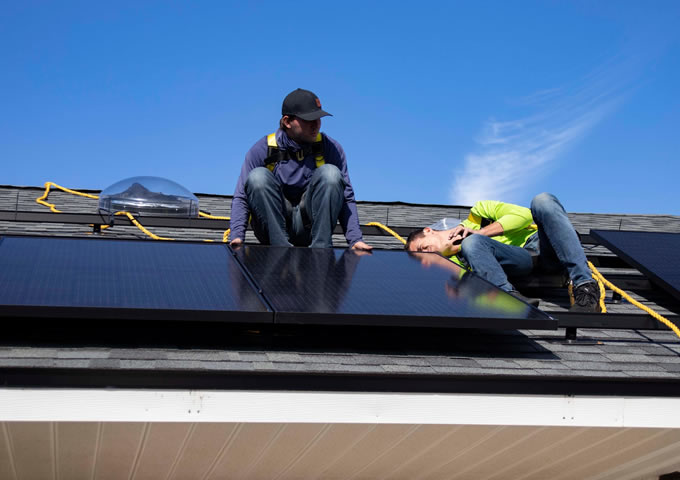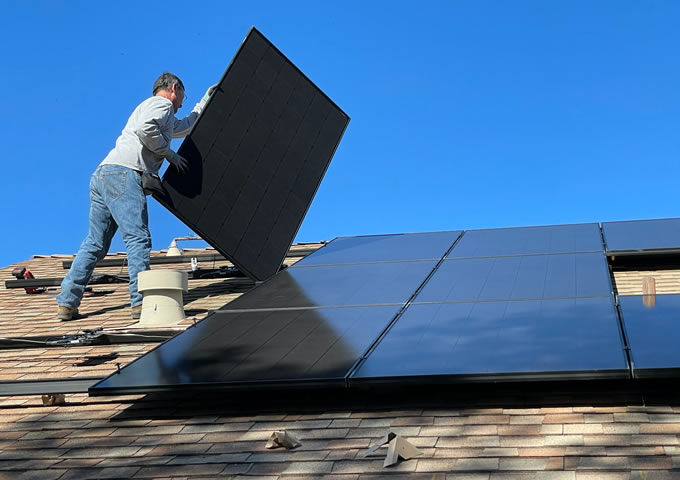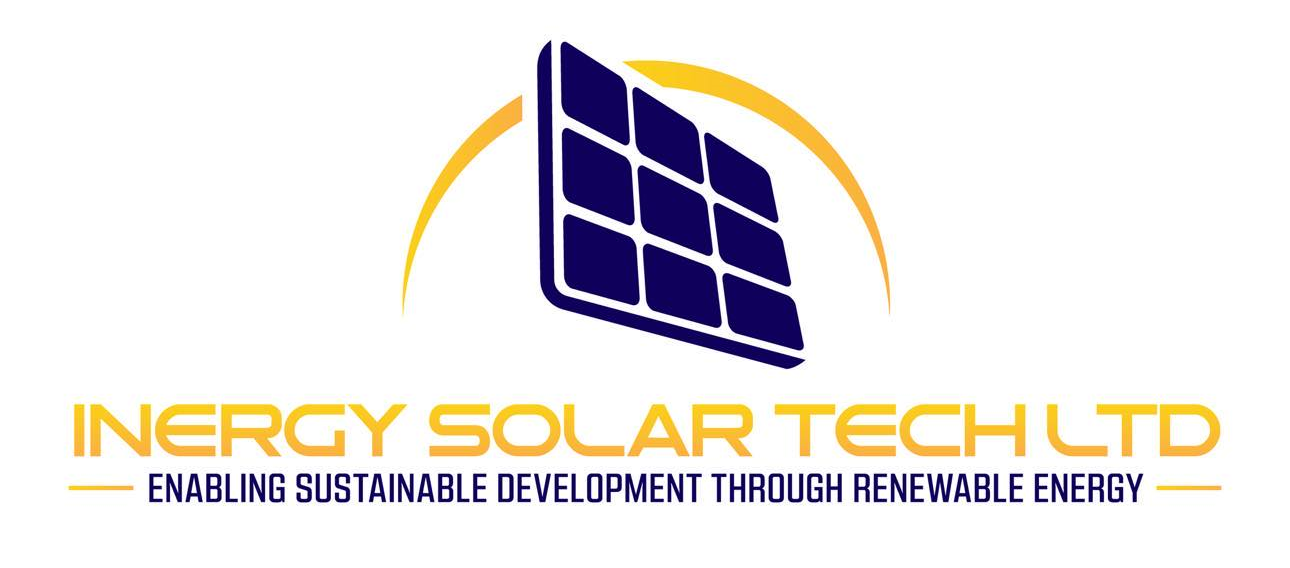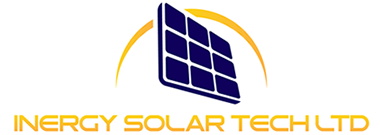
The concept of an off grid solar system is rapidly gaining traction globally. It goes from being just a trend to becoming a vital component of modern sustainable living. This system, independent of the traditional electricity grid, offers homeowners and business owners a self-sufficient alternative to conventional power sources. The growing importance of off grid solar systems lies in their ability to provide reliable, renewable energy, making them particularly appealing to those seeking energy independence and environmental sustainability.
Moreover, as the world increasingly focuses on renewable energy sources, off grid solar systems stand out for their versatility and adaptability. They are not only suitable for remote locations without grid access but also for urban settings, where they contribute to reducing the reliance on fossil fuels and lowering carbon footprints. This shift towards off grid solar solutions reflects a broader global movement towards more responsible and sustainable energy consumption practices.
“Solar energy is bound to be in our future. There’s a kind of inevitability about it.”
Jim Inhofe
U.S. Senator and Environmentalist
What is Off Grid Solar System?
An off-grid solar system, distinct from grid-tied solar systems, offers a unique approach to energy generation and consumption. Unlike an on-grid solar system, which is connected to the public electricity grid, an off-grid solar system operates independently. This means that an off-grid system, or off-grid solar, is entirely self-sufficient, relying on its own power generation and storage capabilities. The growing popularity of off-grid solar systems among energy-conscious individuals stems from their ability to provide complete energy independence, free from the fluctuations and dependencies associated with grid-tied solar or traditional grid solar systems. While grid-tie solar offers the security of a backup from the public grid, off-grid solar systems appeal to those seeking a sustainable lifestyle, unbound by the constraints of grid infrastructure.
Components of an Off Grid Solar System
Setting up an off-grid solar system involves understanding its key components, each playing a crucial role in ensuring efficient and reliable energy generation and storage.
- Solar Panels: The primary source of energy generation in an off-grid system, these panels capture solar energy and convert it into electricity.
- Batteries: Essential for storing the electricity generated by solar panels. Lithium iron phosphate batteries are popular due to their longevity and efficiency.
- Solar Charge Controller: This device regulates the charging of batteries, protecting them from overcharging and enhancing their lifespan.
- Inverter Charger: Converts the direct current (DC) from solar panels and batteries into alternating current (AC) used by home appliances. Inverter chargers often come with pure sine wave technology for efficient energy conversion.
- Charge Controllers and Solar Charging Systems: These systems manage the flow of electricity, ensuring optimal charging and energy distribution.
- Solar Generators and Battery Chargers: Provide additional power and charging capabilities, especially useful in maintaining energy supply during low sunlight periods.
- Deep Cycle Batteries: Designed for prolonged usage, these batteries are capable of deep discharging and recharging, making them ideal for off-grid systems.
- Portable Solar Panels and Rigid Solar Panels: Offer flexibility and durability, respectively, catering to different installation needs and environments.
- Battery Cable and Bus Bars: Essential components for connecting various parts of the solar system, ensuring safe and efficient electricity flow.
- Transfer Switch and Surge Protection: These components enhance the safety of the solar system, protecting it from electrical surges and allowing seamless switching between power sources.
- Combiner Boxes: Used to combine multiple solar inputs into a single output, streamlining the solar charging process.
Each of these components plays a vital role in the functionality and efficiency of an off-grid solar system. Together, they form a unit that harnesses, stores, and manages solar energy, providing a reliable and sustainable power source for off-grid living.
Benefits of Going Off Grid

Opting for an off-grid solar system brings a multitude of advantages, chief among them being energy independence. Living off the grid means freeing oneself from the utility grid, which often translates to greater control over one’s energy usage and costs. This independence is particularly beneficial in areas where the utility grid is unreliable or unavailable. Moreover, off-grid systems provide backup power, ensuring a continuous energy supply even during outages or emergencies.
Another significant advantage is the potential for reduced electricity bills. By generating your own power, you can significantly lower, or even eliminate, your reliance on traditional energy sources, leading to substantial cost savings over time. Additionally, off-grid solar systems have a reduced environmental impact. By using renewable energy, these systems help in reducing carbon emissions and contribute to a more sustainable future.
How Off Grid Systems Work
An off-grid solar power system operates independently from the traditional power grid. It generates electricity through solar panels, which is then stored in batteries for later use. The solar inverter plays a crucial role in this system, converting the direct current (DC) from the solar panels and batteries into alternating current (AC), which is used to power household appliances.
The cost of an off-grid solar system can vary, depending on the size and complexity of the system. Off-grid solar kits and system kits provide a more streamlined and cost-effective solution for those looking to install an off-grid system. These kits often include essential components like off-grid inverters and transfer switches, which are crucial for the safe and efficient operation of the system.
Energy storage systems are another key component, ensuring that excess energy generated during sunny periods is stored for use during less sunny times or at night. Unlike grid-tied systems, which rely on the utility grid for backup power, off-grid systems must be self-sufficient, making efficient energy storage and management crucial.
Overall, the mechanics of an off-grid solar system revolve around generating, storing, and efficiently using solar energy to provide a reliable and sustainable power source, independent of the traditional electricity grid.
Sizing Your Off Grid Solar System
When planning to install an off-grid solar system, sizing it correctly is crucial for efficiency and reliability. The solar system cost and system cost are directly influenced by the size of the system, which should align with your specific energy needs and geographic location. For a home or business going off grid, it’s essential to assess the total energy consumption to determine the capacity of the solar power system needed. This includes considering the energy demands of all appliances and devices, ensuring the off-grid solar system can meet these needs consistently.
Furthermore, geographic factors such as sunlight availability and weather patterns play a significant role in determining the size of your solar system. In areas with less sunlight, you might need larger or more efficient solar panels, like bifacial solar panels, to capture enough solar energy. Additionally, energy storage is a critical aspect of any off-grid system. This involves choosing the right combination of deep cycle batteries, solar batteries, and possibly backup generators to ensure a continuous power supply. Portable power stations and battery racks can also be part of the system, providing additional flexibility and energy security for your house off-grid.
Battery Storage Solutions
Choosing the right battery storage solution is key to the effectiveness of an off-grid solar system. Here are some options, each with unique features and benefits:
- Deep Cycle Batteries: Known for their durability and ability to be discharged and recharged repeatedly, deep cycle batteries are a common choice for off-grid systems.
- Lithium Iron Phosphate (LiFePO4) Batteries: These batteries offer a longer lifespan and higher efficiency compared to traditional lead-acid batteries. They are lightweight and have a higher energy density, making them ideal for off-grid solar systems.
- Lithium Batteries: Offering high efficiency and compact size, lithium batteries are becoming increasingly popular in off-grid setups. They provide a higher depth of discharge and longer cycle life.
- Battery Bank Configurations: Setting up a battery bank involves connecting multiple batteries to achieve the desired capacity and voltage. This configuration is crucial for ensuring that your off-grid system can store enough energy for your needs.


Solar Panels for Off Grid Systems
Choosing the right type of solar panels is crucial for the efficiency and effectiveness of off-grid solar systems. Monocrystalline solar panels are a popular choice due to their high efficiency and durability. They are made from a single crystal structure, which allows for optimal light absorption, making them particularly suitable for areas with limited space. For those seeking flexibility and mobility, portable solar panels offer a convenient solution. These panels are ideal for smaller off-grid systems or for situations where temporary power is needed.
Additionally, rigid solar panels are known for their robustness and longevity, making them a reliable choice for permanent installations in harsh environmental conditions. Bifacial solar panels, which capture solar charge from both sides, are an innovative option that can generate more electricity, especially in snowy or reflective environments. When selecting solar panels for an off-grid system, it’s important to consider factors like the local climate, available space, and energy requirements to ensure you choose panels that will provide optimal performance and energy yield.
Off Grid System Maintenance and Care
Proper maintenance and care are essential for the longevity and efficiency of off-grid solar systems. Regularly consulting the user manual or user manuals provided with your system components is a good starting point. These manuals often contain specific maintenance guidelines and schedules. Regular inspections of solar panels, batteries, and other system components are crucial to identify and address any potential issues early on.
Cleaning solar panels to remove dust, debris, or snow is vital to maintain their efficiency. It’s also important to check and tighten connections and inspect for any signs of wear or damage. For battery maintenance, ensure they are kept at the recommended charge level and stored in a temperature-controlled environment to prolong their lifespan. Keeping a record of any maintenance activities can help in tracking the performance and health of your off-grid system over time.
Adhering to these maintenance practices not only ensures the smooth operation of your off-grid system but also maximizes its lifespan. Regular care and attention will help in preventing system failures and costly repairs, ensuring that your off-grid solar system continues to provide reliable and sustainable energy for years to come. Remember, the key to maintaining off-grid systems lies in routine checks and proactive care, guided by the specific recommendations outlined in the user manuals.
Cost Analysis of Off Grid Solar Systems
The cost analysis of an off-grid solar system encompasses both the initial investment and the long-term financial implications. The off-grid solar system cost primarily includes the cost of solar panels, the solar inverter, batteries for energy storage systems, and additional components like charge controllers and mounting hardware. Labor costs for installing an off-grid system also contribute significantly to the initial expenditure. However, these upfront costs should be evaluated against the long-term savings on electricity bills.
Moreover, the solar system cost varies based on the system’s size and the quality of components used. Investing in a robust and efficient system may have a higher initial cost but can lead to greater savings and reduced maintenance costs over time. Additionally, the cost-effectiveness of an off-grid system is enhanced by the independence it provides from utility grids and fluctuating electricity prices. Over time, the savings from not having to pay for grid-supplied electricity can offset the initial setup costs, making off-grid solar a financially viable option in the long run.
Off Grid Solar System Installation Process
The installation of an off-grid solar system is a meticulous process that involves several key steps to ensure efficiency and safety:
- The first step involves evaluating the location to determine the best placement for solar panels, considering factors like sunlight exposure and shading.
- Based on the energy needs and site assessment, the solar power system is designed, and components like solar panels, inverters, and batteries are sized accordingly.
- This involves purchasing the solar panels, solar inverter, inverter charger, batteries, transfer switches, combiner boxes, and other necessary equipment.
- The solar panels are installed in the predetermined location, ensuring optimal angle and orientation for maximum sunlight exposure.
- The solar inverter, which converts solar energy into usable electricity, and the battery bank for energy storage are set up.
- This step involves connecting all the components, including wiring the solar panels to the inverter and batteries, and installing transfer switches for power management.
- Once everything is installed, the system is tested to ensure it functions correctly, and any necessary adjustments are made.
- A final inspection is conducted to ensure that the installation meets all safety and performance standards.
Energy Independence with Off Grid Solar
Achieving energy independence through an off-grid solar power system is a transformative experience for many homeowners and businesses. Living off the grid with an off-grid solar system means having complete control over your energy source, free from the constraints and dependencies of the traditional utility grid. This independence is not just about self-sufficiency; it’s about the empowerment that comes with generating your own clean energy.
An off-grid solar power system provides reliable backup power, ensuring that energy needs are met even during outages or disruptions in the grid. For businesses, this can mean uninterrupted operations, and for homeowners, a consistent energy supply for daily needs. The inclusion of backup generators in the system design further enhances this reliability, offering an additional layer of security.
Moreover, energy independence with solar power is a proactive step towards a sustainable future. It reduces reliance on fossil fuels and contributes to a smaller carbon footprint, aligning personal or business practices with environmental conservation efforts.
Off Grid Solar in Remote Locations
Implementing off-grid solar systems in remote or isolated locations presents both unique benefits and challenges. For areas where traditional grid access is limited or non-existent, an off-grid system offers a viable solution for reliable energy. Off-grid solar kits and portable power stations have become increasingly popular in these settings, providing essential electricity to power homes, businesses, and critical infrastructure.
The benefits of off-grid solar in remote locations are significant. It brings the convenience and comfort of electricity to areas that would otherwise remain without power. However, these installations also come with challenges. Remote solar installations require careful planning and consideration of local environmental conditions. Logistics, such as transporting equipment to remote sites and ensuring adequate maintenance, can be more complex than in more accessible areas.
Despite these challenges, the advantages of off-grid solar systems in remote locations are clear. They offer a path to energy autonomy, improve quality of life, and can even spur economic development in areas previously hindered by a lack of reliable power. As technology advances, these systems are becoming more efficient and accessible, making off-grid solar a key player in bridging the energy gap in remote communities.
Combining Off Grid Solar with Other Renewable Sources
Integrating off-grid solar systems with other renewable energy sources, such as wind or hydro power, creates a hybrid solar system that enhances both sustainability and reliability. This combination allows for a more consistent energy supply, as different sources can complement each other based on availability and environmental conditions. For instance, on days with limited sunlight but strong winds, a wind turbine can supplement the energy production of solar generators.
Moreover, hybrid systems can optimize energy storage systems, storing excess power generated from any source for later use. This integration of multiple renewable energy sources diversifies the energy mix, reducing reliance on a single source and enhancing the overall efficiency of off-grid power systems. Such systems represent the future of sustainable energy solutions, combining the strengths of various renewable sources to provide a more stable and reliable power supply.
Future Trends in Off Grid Solar Technology
The future of solar energy, particularly in off-grid applications, is poised for significant advancements. Innovations in off-grid solar are expected to focus on improving battery storage capabilities, allowing for more efficient energy retention and usage. Enhanced battery technology will enable off-grid systems to store larger amounts of energy, providing more consistent power and reducing reliance on backup generators.
Additionally, solar technology advancements are likely to lead to more efficient and durable solar panels, further increasing the viability of off-grid solar systems. Smart system management technologies are also anticipated, which will allow for more precise control and optimization of energy use. These advancements will not only make off-grid solar systems more effective but also more accessible to a broader range of users.
Conclusion
In conclusion, off-grid solar systems represent a key renewable energy source, offering numerous solar energy benefits. These systems provide a sustainable and independent energy solution, crucial for meeting global energy needs while contributing to environmental conservation. The future of solar energy looks promising, with ongoing advancements in off-grid solar technology enhancing system efficiency and reliability.
Off-grid solar power systems stand to support the potential of solar power systems in achieving energy independence and sustainability. As we continue to witness the evolution of solar technology, off-grid solar systems are set to play an increasingly important role in the global energy landscape, offering a viable solution for a cleaner, greener future.

